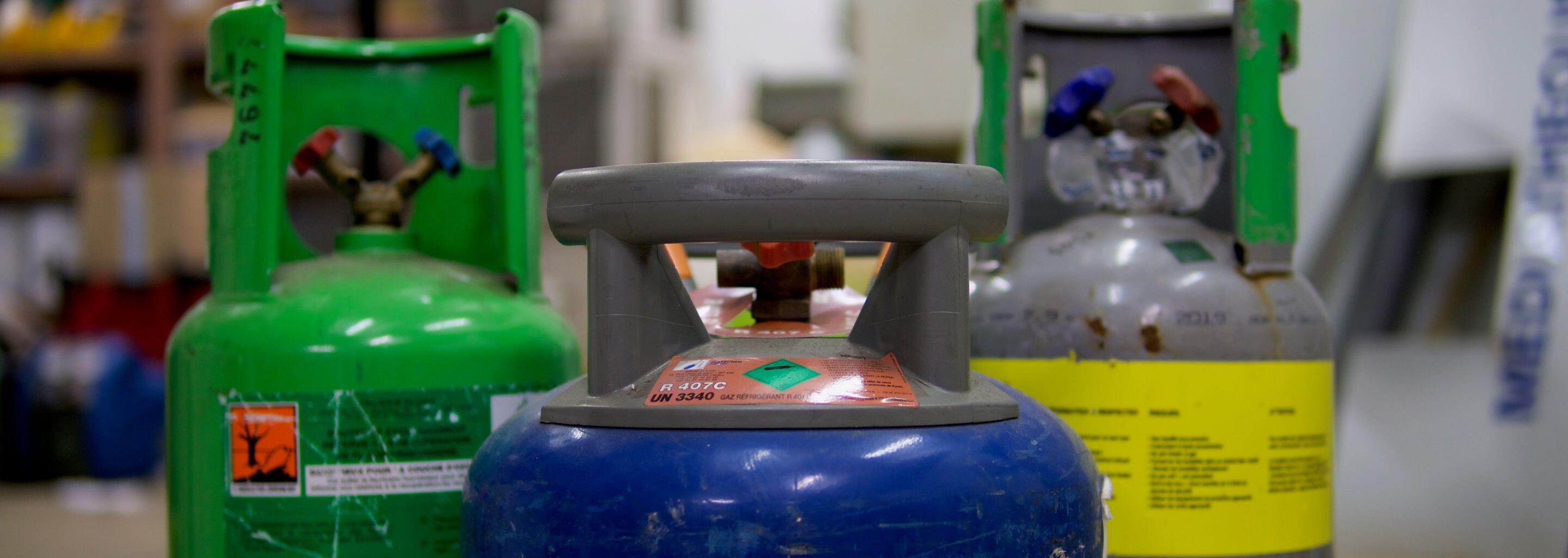New UL FSRI online training addresses firefighter safety concerns related to flammable refrigerants.
This online course explores the results of research experiments conducted as part of a collaborative effort between UL FSRI, UL’s Fire Research and Development team, the Air-Conditioning, Heating, and Refrigeration Institute (AHRI), California Department of Forestry and Fire Protection (CAL FIRE), International Association of Fire Chiefs (IAFC), International Association of Fire Fighters (IAFF), National Association of State Fire Marshals (NASFM), and National Volunteer Fire Council (NVFC).
Over the past few years, UL’s Fire Research and Development team has been involved in an ongoing conversation with AHRI and the fire service that seeks common solutions for both industry and firefighter safety related to incidents involving flammable refrigerants. In order to address the concerns of both groups, UL’s Fire Research and Development team proposed a project to AHRI that would comparatively test newer A2L refrigerants (lower global warming potential refrigerants) with traditional A1 refrigerants in replicated firefighting scenarios. Knowing the tests would need to mirror actual scenarios to make a true impact on firefighter safety, the research collaborative knew additional fire service-based scientific expertise would be required.
With a trusted history of developing and executing experiments with the fire service both in the laboratory and in the field, UL FSRI was brought in to design the tests and to translate the science into strategy. Once the research was complete, UL FSRI continued working with the primary fire service organizations to put the tactical considerations for firefighters into an interactive online training course.
“This project is the first of its kind both nationally and internationally to develop training for next generation refrigerants for the fire service. AHRI appreciates the members of the fire service and UL’s employees that have committed significant time to the development of this on-line training to ensure that the delivery is both accurate and helpful to firefighters.”
-Helen Walter-Terrinoni, AHRI Vice President of Regulatory Affairs.
Now available through the UL FSRI Fire Safety Academy users can access this complementary course anytime to learn more about the hazards posed by refrigerants as well as appropriate mitigation strategies. Armed with this knowledge, standard operating guidelines utilized during fireground operations can be examined and potentially improved to enhance operational effectiveness and reduce the risk to firefighters and building occupants.
“This effort reinforced the value of partnerships between industry, independent testing, and the fire service to research these changes and create educational programs for the fire service. These efforts will continue to improve firefighter health and safety.”
-Sean DeCrane, UL Built Environment Manager of Industry Relations
After taking this course, you will be able to:
- Describe the evolution of refrigerants and the characteristics of the substances found in residential and commercial refrigeration and air conditioning applications.
- Compare the results of performance tests conducted on third and fourth generation refrigerants.
- Identify the hazards presented by flammable refrigerants.
- Incorporate tactical considerations based on experimental results into standard operating guidelines to improve firefighter safety.

